CP11: Effects of the abandonment of chemical-synthetic pesticides on soil organisms
The intensification of agriculture and the associated use of chemical synthetic plant protection products (csPPP) are discussed as the main cause of the decline in biodiversity in agricultural ecosystems (Seibold et al. 2019). Previous studies have mainly focused on arthropods living above ground, which are assigned important ecosystem functions such as plant pollination and biological pest control. It is known that some of these organisms are significantly contaminated with csPPP (Brühl et al., 2021).
Although soil organisms (including earthworms and springtails) are a component of the environmental impact tests for the approval of csPPP, there is a lack of studies investigating the long-term effects of csPPP use on soil organisms at the landscape level.
The aim of the project is to correlate the influence of csPPP residues in soil and vegetation with the abundance, biomass and diversity of soil microorganisms, mesofauna and earthworms. Finally, the combination of the soil organism data obtained with data on above-ground fauna and flora allows a statement to be made as to whether the long-term renunciation of csPPP has a positive effect on the diversity of various groups of organisms and to what extent soil pollution is associated with a decline in biodiversity in agricultural landscapes.
The studies are based on the following hypotheses:
- The concentration of csPPP in soils is higher in conventionally intensively farmed arable land than in soils of comparable organically farmed land.
- The soil fauna reacts more sensitively to csPPP contamination in soils and vegetation than soil microorganisms. Among soil microorganisms, fungi are more likely to be affected by csPPP than bacteria.
- A higher contamination of soils with csPPP will primarily affect earthworms that burrow in the soil and feed on soil, while the mesofauna that lives predominantly on the soil is more likely to be affected by the csPPP contamination in the vegetation.
- In the longer term, the NOcsPS cultivation system has a positive effect on soil organisms.
The planned studies will be carried out in close cooperation with our partners in the Biodiversity Cluster (VP8, 9, 10, 12). As part of the joint study design with 20 study landscapes, we will record the effects of csPPP on the functional diversity, abundance and biomass of soil organisms (soil microorganisms, mesofauna and earthworms). The biomass of soil microorganisms will be determined by the chloroform fumigation extraction method and the microbial community structure by fatty acid analysis. The abundance, diversity and biomass of the mesofauna will be determined using soil core samples and subsequent genus and species identification. The abundance, biomass and diversity of earthworms are determined by hand-picking and subsequent mustard extraction. Sampling will take place in spring/summer 2026 from the arable land in the study landscapes.
At each of the 160 sampling points, an area-representative sample is collected based on 5 individual samples. Soil sampling for the analysis of soil microorganisms is carried out using a boring stick (0-20 cm soil depth), the mesofauna is measured using MacFadyen cores (diameter 5.6 cm, 0-5 cm) and earthworms are recorded using soil blocks (0-20 cm). Furthermore, we will record relevant soil parameters (pH, Corg, Ntotal, Nmin etc.) for the basic characterization of the study areas.
The investigations from the first funding phase at Heidfeldhof on the activity and abundance of soil microorganisms and soil fauna will be continued.



